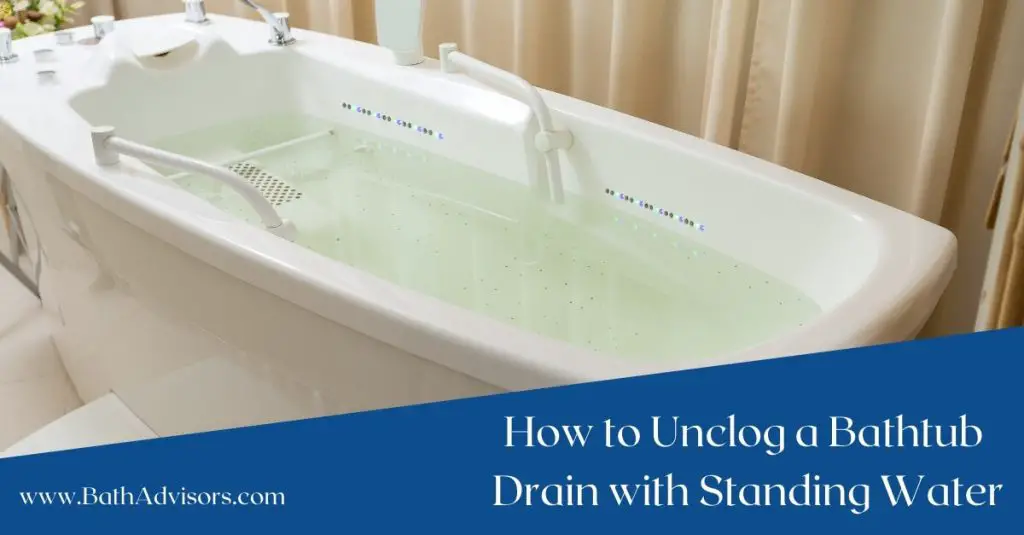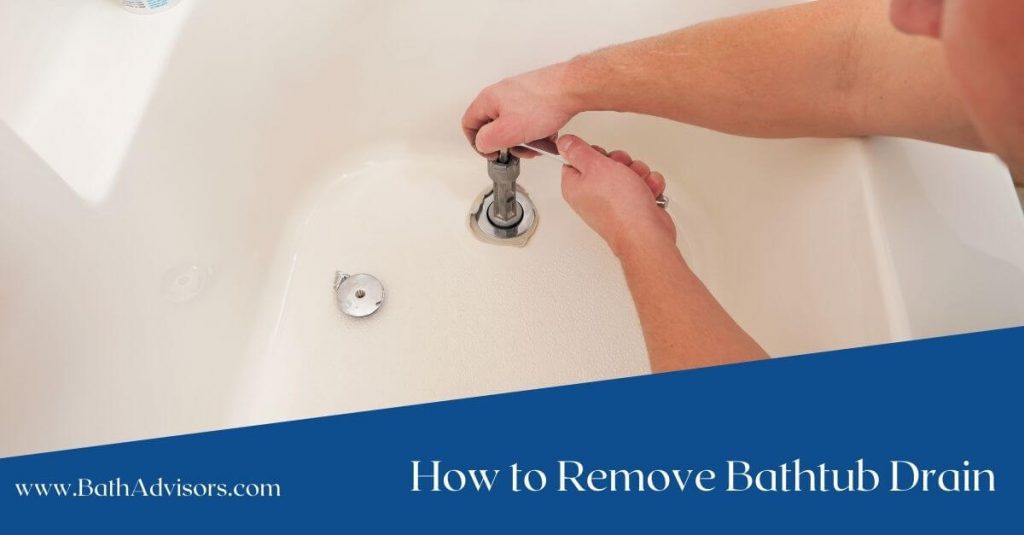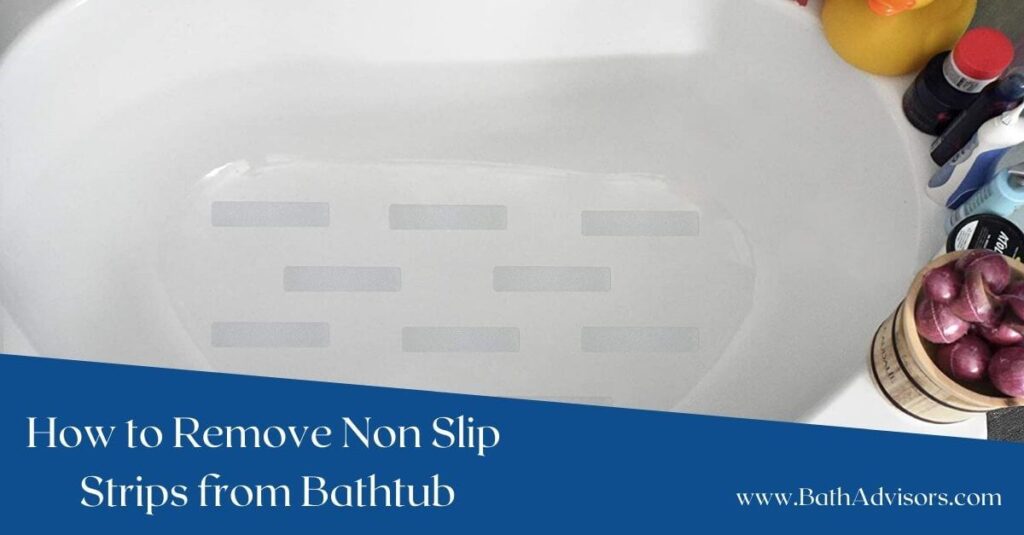The purpose of a bathtub drain stopper is to keep the water from leaking, so why are there so many types? Well, the end purpose might be the same, but the type of drain stopper affects your bathing experience.
You’ll flush all the water down the drain once you are done bathing, and that’s where the difference matters. Also, the longevity of the stopper varies from type to type, which makes choosing the right type even crucial.
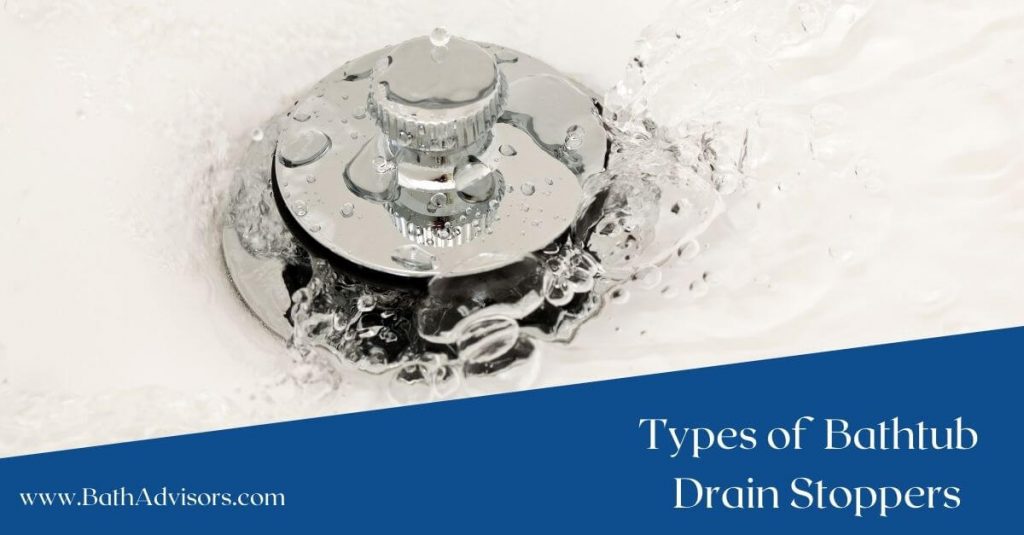
This article rounds up different types of bathtub drain stoppers, along with their pros/cons, and the best type suitable for your bathtub.
Types of Bathtub Drain Stoppers: The 7 Commonly Used Drain Stoppers
1. Push and Pull

Push and pull drain stoppers are usually found in every household. These are the easiest to use, plus installing and removing them isn’t also a task. Pushing the stopper down creates a seal and keeps the water inside the bathtub.
On the other hand, when pulled up, it allows the water to flush down the drain quickly, making the bathtub empty. There are plenty of colors and finishes available in the push and pull drain stoppers, the stainless-steel one being the most popular.
Lastly, these drain stoppers are versatile and can easily fit well with generic, soaking, acrylic, and composite bathtubs.
- Easy to install and remove
- Require less maintenance because of fewer mechanical parts
- Cheaper than other alternatives
- Work well with almost all types of bathtubs
- Wears out quickly because of repetitive opening and closing
- Debris and soap scum can hinder the stopper’s functionality
2. Lift and Turn

Widely used in freestanding, alcove, and corner bathtubs, lift-and-turn drain stoppers have similar functionality as that of push and pull drain stoppers. Instead of pushing the stopper head, you turn it and then lift it up to drain the water.
There’s a screw in the center attached with a knob that controls the turning mechanism and creates a tight seal inside the bathtub. The design is very simple, making these drain stoppers require less maintenance and repairs.
Cleaning the debris from underneath the stopper is a cakewalk, as all you need to do is turn the screw, and the plate will lift up automatically.
- Fewer chances of malfunctions
- Easy to clean and maintain
- It doesn’t hurt the foot if you step on it accidentally
- Requires minimal effort to turn and lift
- Removing the set screw for repairs can be a little tricky
- The screw threads can get damaged if over-tightened
3. Toe Touch

A toe touch drain stopper eliminates the need for bending over, as you can operate it with your toe. There’s a spring under the stopper’s head that lifts it as you press it with your foot. Pressing the stopper again closes the valve and helps fill the bathtub.
Like the lift-and-turn and push-and-pull stoppers, this one is also easy to use and relatively trouble-free. Perfect to use with a freestanding bathtub or a walk-in-tub, toe touch stoppers make bathing convenient.
Different brands offer different types of toe caps making this stopper a stylish choice for your bathtub.
- The spring-loaded mechanism opens and closes the stopper quickly
- You don’t need to bend over to operate it
- Long-lasting and highly durable
- The rubber seal under the stopper cap traps hair and other debris
- The spring can wear out quickly
- Replacing the stopper takes time
4. Flip-it
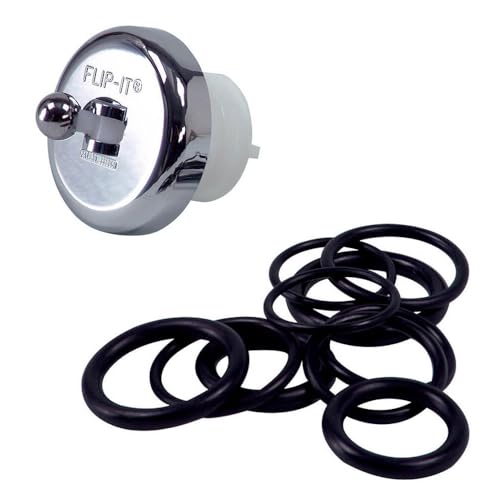
Flip-it drain stoppers are universal and can be used with almost all bathtubs. The design is really simple, and installing this stopper doesn’t require any tools. There’s a rubber base attached to a steel cap, and the stopper fits inside the drain easily.
The O-rings around the drain stopper create a good seal preventing the water from leaking. Another advantage of the flip-it stoppers over other types is zero maintenance. Just put the stopper inside the drain, toggle the lever and you are good to go.
- Tool-free installation
- Compatible with almost all types of bathtubs
- No hassles of replacing the faulty springs of rubber seals
- It creates a watertight seal
- Accidentally toggling the lever can empty the bathtub quickly
- The big toggle lever can hurt your feet if you step on it
5. Pop-up

As the name indicates, these drain stoppers pop up if pushed. Almost similar to a sink drain, pop-up tub drain stoppers are popular among people with freestanding, acrylic, and alcove bathtubs. There is a lifting rod connected to the stopper’s cap and the locking mechanism.
When turned clockwise, the drain stopper locks in place and creates a seal. Turning it anticlockwise pops the stopper cap up, and the water seeps inside the drain. The design of the stopper makes it ideal for trapping dust and hair.
However, extracting these elements from the drain plate can be daunting.
- Easy to use, once installed properly
- It traps hair, dust, and debris
- Lesser chances of malfunctions
- The spring controls the pop action
- Installing this drain stopper is slightly challenging
- The spring mechanism requires timely replacement
6. Trip Lever

The trip lever drain stopper is further categorized into two types one with a visible faceplate outside the bathtub and one with a twist cover attached to the overflow plate. The one with the faceplate outside the bathtub is ideal for houses with kids and the elderly.
Pressing the lever quickly empties the bathtub making things convenient. The twist cover stopper also works the same way, but to press the lever, you have to bend over.
Trip lever drain stoppers are not meant for every type of bathtub, but they fit well with freestanding tubs, alcove tubs, and walk-in bathtubs.
- No accidentally activating the drain stopper while bathing
- Eliminates the hassles of bending over to open the drain stopper
- Looks elegant
- The bathtub looks neat
- Difficult to install and maintain
- Most expensive of all types of bathtub drains
7. StopShroom

The StopShroom drain plugs are the easiest to install, and that makes them compatible with all types of bathtubs. Entirely made using rubber, there are no hassles of corrosion or maintenance, so these DIY bathtub drain stoppers usually last longer.
To install, push the rubber bathtub stopper inside the drain opening, and you are good to go. Pulling it out will free the drain, and you will see water flushing out of the tub. In addition, cleaning and maintaining this stopper is easy-breezy, and you can put it back inside the drain after rinsing.
- These are the cheapest drain stoppers
- No need to maintain or worry about mechanical parts
- Installing it does not require any tools
- Cleaning the stopper is stress-free
- Damages are irreparable, and the stopper ultimately needs replacement
- The rubber stopper gets hard during the winters and becomes unusable sometimes
How to Install a Bathtub Drain Stopper
After reading about the different types of bathtub drain stoppers, you might have decided on the right one for your tub! Now, it’s essential to understand the installation process. Here is your step-by-step guide to installing a bathtub drain stopper without any professional help.
Tools Required to Install a Bathtub Drain Stopper
- Screwdriver
- Tub drain wrench or the dumbbell tool
- Putty knife
- Adjustable wrench and channel-type pliers
- Plumber’s putty
- Non-scratch scouring pad
- Tub drain stopper
Steps to Install a Bathtub Drain Stopper
Step 1: Remove the Existing Drain Stopper and Linkage (If you have a new bathtub, skip this step)
Start with removing the drain stopper so that you can install a new one. Next, unscrew the cover plate, and extract the stopper’s level rod carefully using pliers from the linkage’s opening.
Place something on the overflow cover to avoid getting debris inside the drain.
Finding it hard to remove the drain stopper and the linkage? Check out this how to remove bathtub drain article and learn how to remove different types of drain stoppers easily.
Step 2: Extract the Old Bathtub Fitting
A drain stopper comes with an entire fitting, so you need to remove the existing fitting first. Determine the end of the wrench that fits inside the drain opening. Now align the wrench with the crossbar (the metal mesh inside the drain fitting), and tighten the wrench.
Rotating the wrench anticlockwise will help you loosen the fitting and then remove it easily. If there is rust around the drain fitting, spray some WD-40 and then remove it using a wrench.
Step 3: Clean the Tub’s Drain Opening
After pulling the entire fitting out of the tub’s drain opening, clean it thoroughly. Pour some hot water over the plumber’s putty and scrape it off using a putty knife. You can even use a non-scratch scouring pad to remove the putty.
Step 4: Determine the Size of Drain Thread
Most drain stoppers come with a converter kit, and you get two or more drain threads inside the box. You can even purchase a kit separately if the manufacturer does not ship it with the stopper.
Determine the size of the drain thread by taking reference from the old fitting.
Step 5: Install the Stopper and Fitting
Pull the stopper out of the new fitting, and put the fitting inside the bathtub drain. Apply a good amount of plumber’s putty to secure the fitting while ensuring it does not leak when you refill the bathtub.
Now put the stopper inside the drain fitting, and tighten it with your hand. When you feel like the stopper’s screwed properly inside the fitting, use a wrench and tighten it.
Clean off the excessive plumber’s putty, and let the drain stopper sit for a few hours before you refill the water and take a bath.
FAQs
Q1: What’s the Best Bathtub Drain Stopper Type?
A1: It ultimately depends on your requirements and the type of bathtub you have. The best drain stopper for you should be easy to install, easy to use, and requires less maintenance.
Q2: Is there a Universal Tub Stopper?

A2: Yes, StopShroom drain plugs can be used with almost any bathtub, so they are universal tub stoppers. The thing to note here is that they aren’t very durable and do not last long when compared to metal stoppers.
Q3: What can I use if I don’t have a Tub Stopper?
A3: Nothing can be used in place of a bathtub drain stopper because only a stopper can create a watertight seal. Do not put tissues, used coffee pods or anything inside the drain as it might block the drain elbow.
Q4: Can you use a Sink Stopper on a Bathtub?
A4: The drain’s opening of a sink is smaller than a bathtub, so the stoppers for the sink are also smaller. In a nutshell, you cannot use a sink stopper on a bathtub. You can only use a sink stopper on a bathtub if you have installed a 1.5″ sink drain assembly, which is hardly the case in any bathroom.
Q5: How do you Stop a Bathtub Stopper from Popping Up?
A5: If the bathtub stopper is popping up erratically, there may be something wrong with the spring mechanism that holds the stopper’s cover in place. You might need to replace the spring mechanism to solve the problem or get a new drain stopper.
Here’s a drain stopper troubleshooting video that may help.
Final Thoughts
A drain stopper is the smallest but the most important element of every bathtub, so it’s essential to choose the right type of bathtub drain stopper.
After installing, ensure cleaning the stopper regularly to enhance its lifespan while enjoying a stress-free bath every day.
Do let me know in the comments which you think is the best drain stopper type and why you’d prefer using it on your bathtub.




